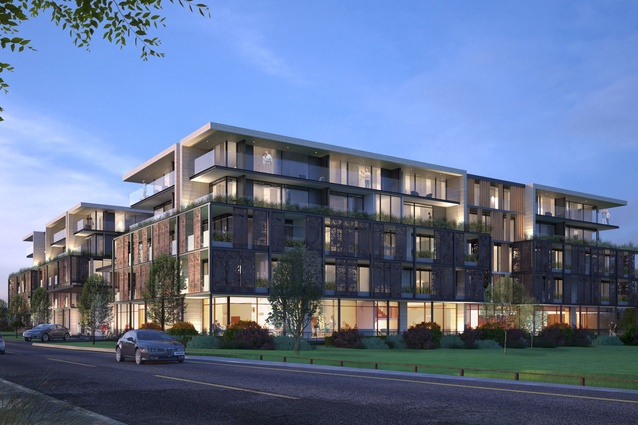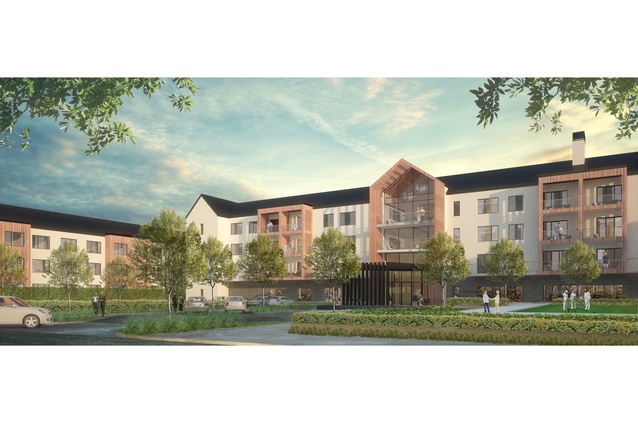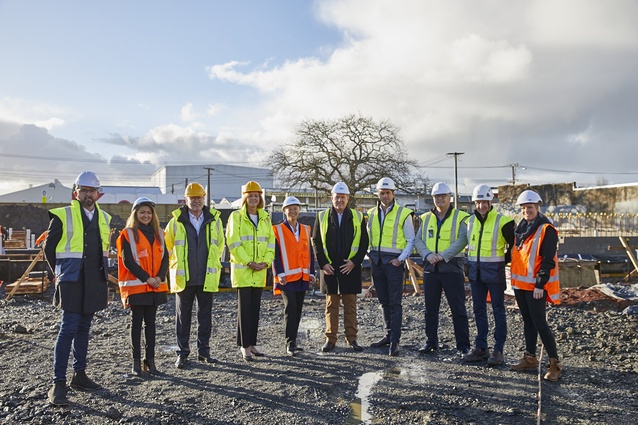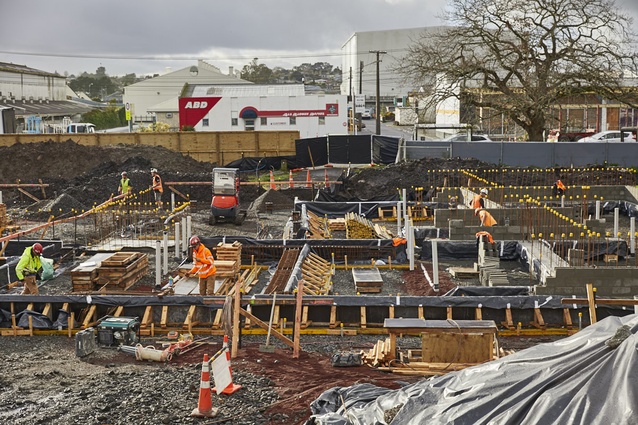Flexible space: Design for aged care
Attitudes around aged care and the spaces in which ageing people inhabit have certainly changed in recent times. As the Baby Boomer generation reaches retirement age, older people are living more active lifestyles and seeking living arrangements that cater to their needs. The old, industrialised model of nursing homes and independent living facilities is being re-thought.
Ignite Architects is currently working on several projects in the aged care sector, including Auckland’s first Council-owned residential village in Henderson and a more boutique development in Takapuna. Ashley Cusick caught up with Adam Taylor, who oversees Ignite’s commercial aged care projects, and Michael Bilsborough, a designer for the Council-owned Henderson Valley Road development.
Ashley Cusick (AC): What are some things that you have to take into consideration when designing for aged care that are different to other types projects?
Adam Taylor (AT): One of the key things, from my perspective, is creating an environment that encourages social interaction: that is something we always look at in terms of the architectural component of age care. So, making sure we are providing the care component but also the interactive and active component as well. The transition spaces between the core spaces and how people move between them is really important.
Michael Bilsborough (MB): A lot of it is just about building a community and building spaces that can support that community structure and making environments that people actually want to inhabit.
AC: Talk us through the design process when creating spaces for people who need differing levels of care.
AT: I think the big part is having a space that is adaptable to your care requirements, rather than moving from space to space as your condition changes. One of the biggest issues in aged care is all the change that goes along with going from your normal day-to-day life in your own home to moving into independent apartment, then into assisted care, then into higher care, et cetera. Every step in that process is a change. So, from our perspective, we look at how we can make a space that is more flexible where somebody can move in and not necessarily have to move around so frequently. They can have the care level change and reflect their current state of health.
AC: Ignite employs a set of Best Practice Models for aged care. Can you tell me more about how those have been developed and how you use them in design?
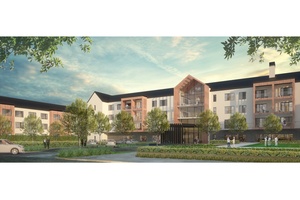
AT: One particular model we have looked at pretty closely is the Hogeweyk Model that came out of the Netherlands. That is a dementia facility where they have created clusters of group living – around eight people per household unit. With dementia it is all about minimising that change and making sure things are familiar, both their surroundings and also the people they associate with. A lot of research has been done into grouping people with similar backgrounds. So, one might be an urban environment, some more rural or others more active communities.
They group people together into the household unit where you have eight bedrooms off a communal living area, which forces interaction within the community. We are seeing that replicated in traditional care with the creation of house units for up to 12 people that use the same living facility, rather than a hundred people with one massive communal centre. It is somewhere where people get to know each other on a flatting level and social interactions are a daily thing rather than a weekly thing.
MB: It has kind of been reinforced by the work we did with Panuku and developing their Housing for Older People plan. There was a lot of stakeholder engagement with managers and residents of some of their existing villages. What came out of that was trying to build these communities of between five or 10 people within a wider group. It is about creating a cluster of people that will get on.
A lot of the social stuff is about the residents looking after each other. They want the neighbours to cross the corridor to find out if another resident is not up as usual or not doing what they normally do, so that when there is an issue people pick it up.
AT: One of the real issues in an ageing community is mental health, depression and those sorts of things. Creating that active social environment that encourages people to interact helps to counter that.
AC: Is prioritising social interaction something that has changed within aged cared design over the last few decades?
AT: Definitely. Aged care facilities of the past have been more, you know, they were facilities rather than a lifestyle village. There is certainly a move towards “country clubs” or “wellness centres” and that is really the focus of the centre rather than being a facility. Breaking down that hospital-like feel comes with little things like the finishes and adding more light. There is a push to try and make the transition as minimal as possible from home life to aged care.
MB: There is a bit more of a focus on wellness, rather than healthcare: promoting good health as opposed to reacting to health issues.
AT: People are much more active to an older age now so we are seeing people go into facilities at an older age.
AC: So that level of activity needs to be carried through to aged care facilities.
AT: Exactly, especially in the next decade or so when the baby boomers start retiring. The expectation of amenity and lifestyle is completely different to what it was 10 to 15 years ago. They certainly want more active communities, and they want to have things like wellness centres and spas and pools. That is the expectation moving forward.
AC: Michael, tell us about the project you’re working on with Haumaru Housing [a partnership between The Selwyn Foundation and Auckland Council] in Henderson.
MB: It is known as housing for older people, which is an interesting thing. It is effectively social housing or sheltered housing for pensioners. It’s means tested; you need to be retirement age to move in and have little or no assets. It is basically for people who can’t really afford to live in a commercial retirement development.
It is a four-storey apartment building. It’s one of the first pension housing schemes that Auckland council has built for probably 40 years or so: in recognition of where things are going in the market for ageing communities and people ageing and not having housing options as well.
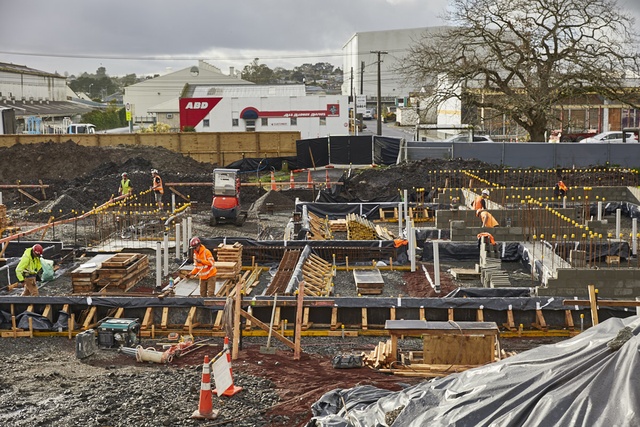
AC: And do you also work on aged care projects that are more luxury focused?
AT: We have everything ranging through the full spectrum; we have one particular boutique offering that we are developing in Takapuna, which is more like a five or six-star hotel lifestyle block with amenities like spa facilities and et cetera. It is really a facility focused on the lifestyle, moving into an apartment that is similar to what you are living in currently. You are staying in one spot through the duration when you live there, and the care comes to you rather than you going to the care.
Other facilities we work on supply a country club lifestyle, very spacious and set out in the regional areas. These would have your swimming pool, your spa facilities, emphasis on active lifestyle, gym facilities, walking tracks and that sort of thing. Again, those are part of a broader residential development: trying to blur the lines between retirement living and aged care and integrate it within the community, rather than being a stand alone facility.
AC: Are there any specific ways design can lead to better wellbeing for older people?
MB: Aside from prioritising mental and physical health there are things you can do around sustainability as well – like low energy use and interior environmental quality – which offer real benefits, particularly if you are in that social sector, if you can minimise people’s energy usage and minimise their bills. That then helps mental wellbeing as much as anything else because people aren’t worrying about certain things. High quality interior environments give daylight and fresh air and things like that, which also have physical health benefits.
The Henderson project is looking like it is going to be a Home Star 7-rated development, which is pretty impressive and will project real benefit to the residents.
AC: What are the technical challenges that come with that kind of design, keeping in mind that it is for ageing people compared to if you were designing a five star hotel or a regular village?
AT: There are lot of the same considerations. It needs to be accessible, and that is not specific to the ageing community, it is necessary for the active community as well and people with disabilities. Accessibility is approached in much the same way as what we would approach any normal project. Little things like sharp edges and the types of handles for people becoming older with arthritis are things to consider.
One of the biggest things we look at is the adjacency of different spaces and uses and how they function between each other. You need to make sure that the distance isn’t too great and what have you, but that is really the same challenges we would face on any normal day in architecture. Probably the key thing is making sure that the spaces are flexible enough to accommodate different conditions as they arise.
MB: I think one of the tricks is making it not feel like a care facility, and when it does you have missed an opportunity. Because, when you get to that stage of life you don’t want to feel like you are in a facility; you still want to feel like you are at home. If you need an element of care it should just feel like a normal process.
AC: Have you learnt any techniques that help make that design process smoother?
AT: It is about understanding your market and the demographic of that area. There is a lot of research that goes into new facilities. You need to understand what your market is, not only in the next five years but 10 to 15 years down the track. The buildings that we are designing, will they need to be different in 20 years’ time to suit a different demographic, a different expectation?
MB: As markets move, existing facilities are going to have to adapt to suit that as well. We need to build that flexibility into what we are doing today because in 10 years’ time competition is going to open up down the road, and you need to be able to respond to that.
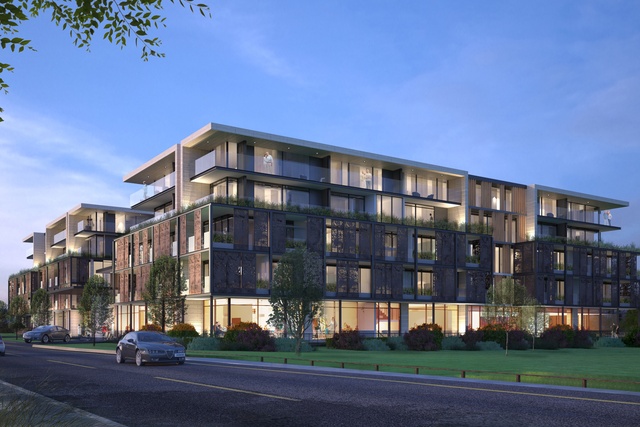
AC: Are there any similarities or differences between a social housing project and luxury boutique type, in terms of design approach?
MB: We try and make them so that it doesn’t look like a social project compared to a market-based project. But, I think that one thing we have had to do in the Henderson project, that Adam doesn’t usually have to do with some of his projects, is we need to accommodate mobility scooters in all of the units because each resident has a mobility scooter. We need space in the communal areas and the lifts to get them up to the top floor and down the corridor.
Some of the finishes we are looking at differ – we are trying to make robust finishes but not make it feel utilitarian or institutional. We want it still feel a little bit homely. We obviously don’t have the same communal spaces you would see in private or luxury where you have cafes, bars, restaurants, swimming pools and the like. But, we have provided social amenity within the wider site and the landscape in key points within the building to provide those social spaces.
Within social housing a lot of residents spend the bulk of their time in the unit or in close proximity to it, so it is important to create connections into the wider community and within each cluster of apartments. We try and follow the same design principles, but there are different challenges in terms of management facilities and market context as well.
AC: Are there any changes or things that you would like to see become more standard in the aged care design?
AT: I think what we will see is more and more of this integration of the ageing community into the broader community. There are already places in the US where aged care is integrated in universities, and they have seen benefits associated with that in terms of companionship and association. We are not going see segregated communities, but they will be in facilities that are more incorporated to be mixed use, retail developments. I think that is going to be the trend moving forward.
MB: I think mixed tenure type options would be great to see more of as well. There will be more need for social housing options given the way home ownership is going at the moment, and there may be a broader tenure choice, perhaps, in the market.


